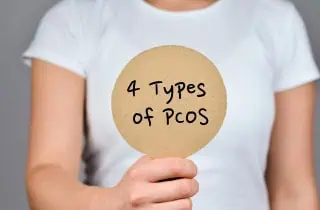
Polycystic ovary syndrome (PCOS) is not one disease. Instead, it’s “a heterogeneous disorder with different underlying biological mechanisms.” In other words, it’s a set of symptoms (androgen excess and anovulatory cycles) caused or driven by several underlying factors. To successfully treat PCOS, you need to identify which factor (or factors) is driving the symptoms. In other words, you need to know your functional type of PCOS.
The four functional types of PCOS include insulin-resistant PCOS, post-pill PCOS (which is temporary), inflammatory PCOS, and the far less common adrenal PCOS.

 A menstrual cycle is, by definition, an ovulatory cycle in which ovulation is the main event and progesterone is made. Any other kind of bleed is either an anovulatory bleed or a pill bleed—neither of which is a real menstrual cycle.
A menstrual cycle is, by definition, an ovulatory cycle in which ovulation is the main event and progesterone is made. Any other kind of bleed is either an anovulatory bleed or a pill bleed—neither of which is a real menstrual cycle.